In April 2020, there were about 4.57 billion active internet users and almost 3.81 billion active social media users [Statista]. What this means for content marketers like you is - the opportunity scope is huge. All you need to do is tap into it and engage with your target audience with content marketing strategies that work.
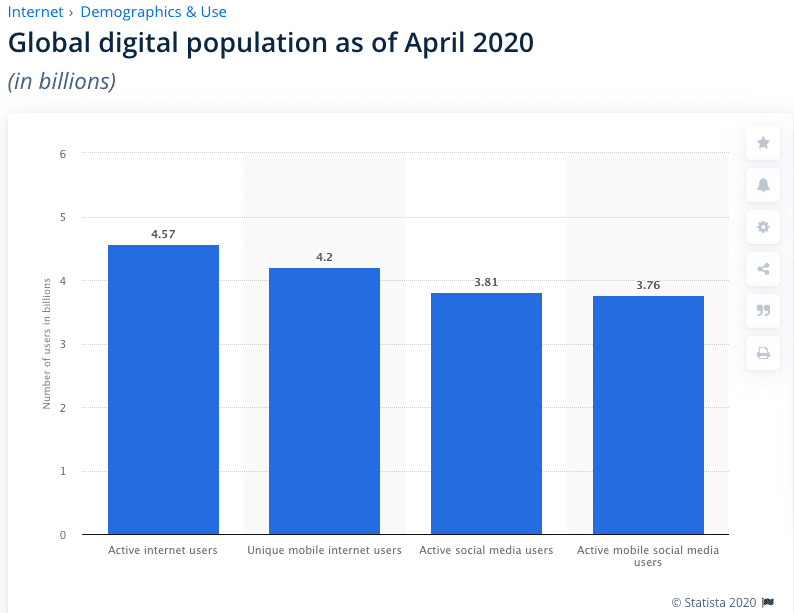
Source: Statista
Seth Godin's statement - content marketing is the only marketing left rings true for the internet-driven generation.
When done correctly, content marketing can yield amazing results. Brian Dean, popularly known as the Unicorn of SEO, says implementing action-oriented content marketing tips has helped his blog get 304,265 monthly visits.
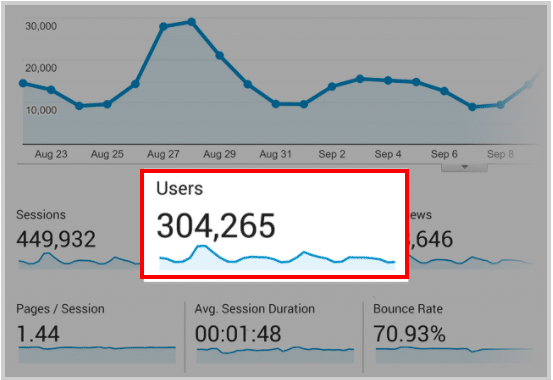
Source: Backlinko
You can be Brian too. Taking lessons from Brian and other content marketing experts, here are 7 content marketing tips that you must start implementing to create brand visibility.
Before I talk about the tips, every content marketer needs to understand - Quality content is your weapon. You can have a great content roadmap of topics, your content calendar may be all squished because there are so many ideas you want to publish - but everything boils down to one simple fact - The content you publish, whichever format it is, should be of high quality. If you ask about SEO, yes that's important, but even Google's Senior Webmaster Trends Analyst says -
Let's get started.
Brian Dean notes that comparison posts have a better chance of having a higher CPC. This is simply because anyone searching for X vs. Y post is already familiar with the basic concepts. He/she is searching only to make a decision of choosing one over the other. Comparison keywords usually don't have stiff competition, making it easier to get the coveted top-ranking spots on Google Search.
Adding to his explanation, Brian also showed how posts like these can have higher CPC. Below is an example of CPC on one of his such comparison posts:
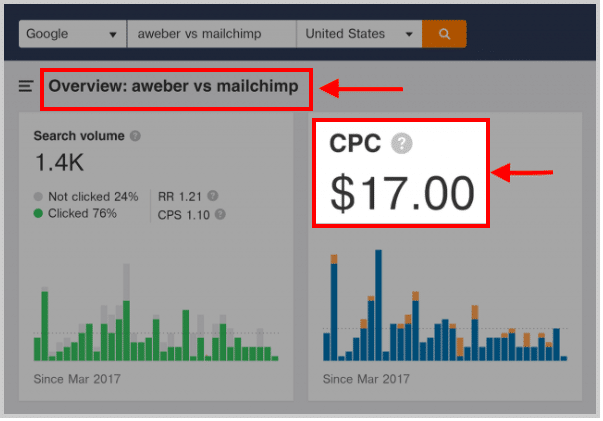
Source: Backlinko
Pro tip: You can also use this concept for your website. For instance, you can have a dedicated landing page for a comparison post between your product and your competitors. Such webpages increase organic traffic to your website as they give your product more leverage.
Jason DiNunno, CEO of DigitalAuthority.co, says an effective content calendar helps in effectively publishing content for a brand. He believes that if you don’t have a plan, chances are your audience won’t even see it.
His words are true. If you don’t have a content calendar in place, it is very difficult to scale up your blog or business. Like I always say, content doesn’t necessarily mean blogs. It includes social media, videos, infographics, PDFs, whitepapers, case studies, landing pages, websites, and so much more. So, having a calendar for each specific format is essential.
Simultaneously, you need to also manage your calendar. Automating a few tasks within your calendar can help you put your content marketing efforts in place.
You can use Monday.com to keep your content works in place. Monday.com is easy and has several ready-to-use templates to get started. Users recommend the Editorial calendar template on Monday.com - it’s visually appealing and helps them track their content progress whilst collaborating with their team across cities. Yes, remote work is the norm now! 🙂
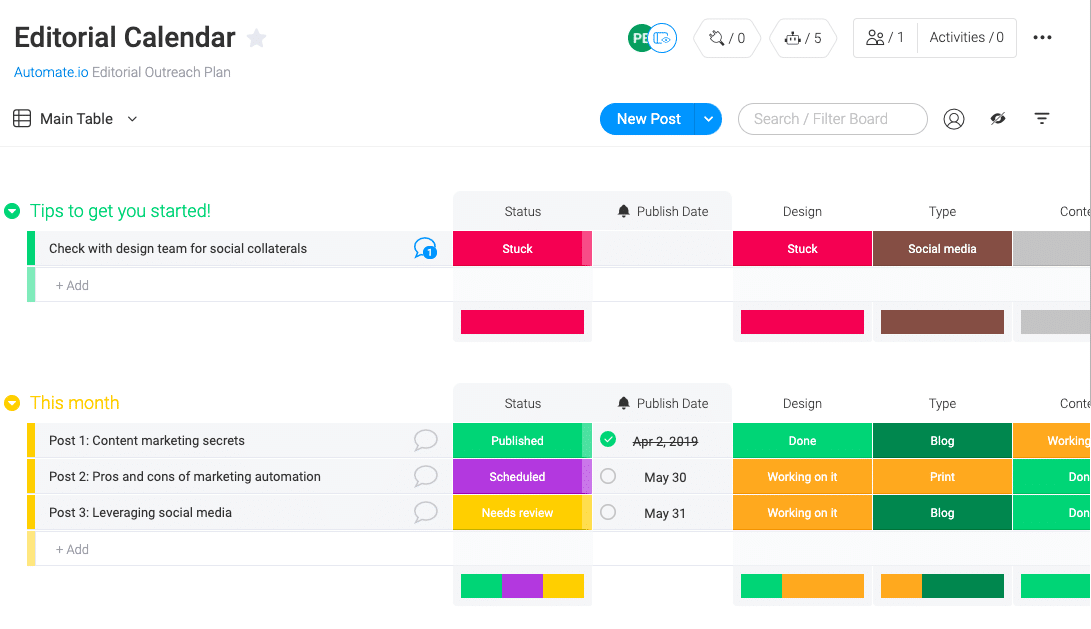
Another feature I personally like is setting up automated task flows. For instance, when you integrate Monday.com and Gmail, you can send an email automatically to one of your team members after completing a particular task. It comes handy when we are collaborating with sales or other teams on multiple projects.
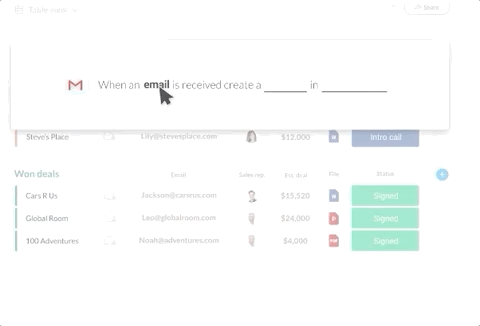
Rand Fishkin, founder of Moz, says that visually engaging content will never feel corporate, inauthentic, or a visual picked from stock images.
A visual goes hand-in-hand with your content ideas. It may be a visual for your email, landing page, website, or blog. Whatever it is, if your visual is scattered and inauthentic, it will instantly pull down your content.
Here's a sample of an amazing email from Evernote.com on a recent discount offer. The email is simple, with a little bit of illustration highlighting the discount percentage. The remaining email uses the brand's green colour and black in fonts to make it look appealing.
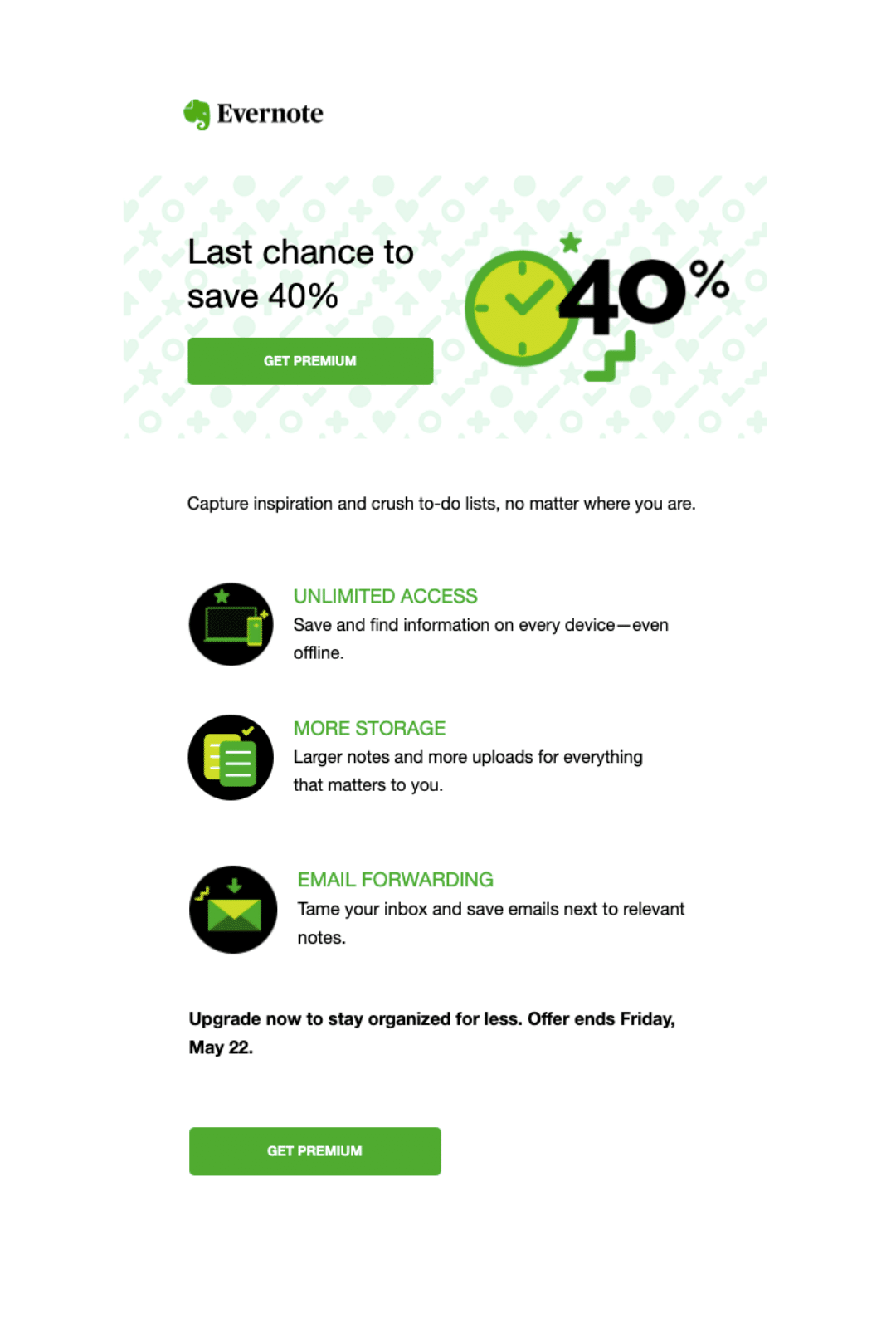
The catch here is to create a visual that aligns with your brand to maintain consistency.
This is directly related to understanding your target audiences' user persona.
[bctt tweet="Brands are steadily running user-generated content to create brand loyalty." username="relevance"]
You will see brands turning to their users for content ideas, taking a cue from what their users are looking for and building content around it.
It is one of the sure-shot ways of building brand relation with target users and creating a sense of reliability in users. There is a reason Apple runs "shot on iPhone" campaigns mentioning their users who've taken those snaps or Coca-Cola harps on about "open happiness".
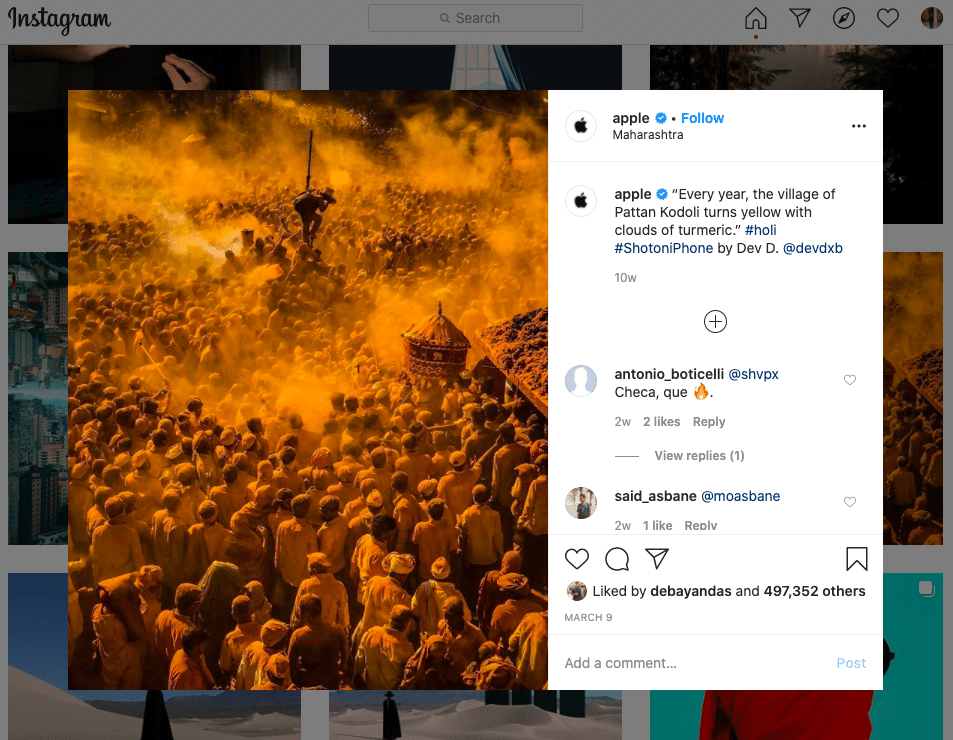
These brands understand their users' sentiments and demands, and try to emotionally connect with them. And it is a success. Apple enjoys unprecedented loyalty, and so does the beverage brand, Coca-Cola.
The same thought process transcends in the SaaS world. Your users want content that aligns with their demands. And what better way to do that than asking your users what they want?
In a survey, 90% respondents agreed that user-generated content did influence their buying decisions. And brands like Hootsuite affirm this with their UGC (User-Generated Content) campaigns.
Hootsuite's #iworkfromhere campaign is the perfect example of humanizing marketing and itself with UGC. The brand connected with nomadic workaholics for whom work location is not a barrier. They are just happy to be working at their own comfort. This campaign touched the right chords with many people posting images of their work locations that went beyond office premises. The campaign brought the authenticity of each user into Hootsuite's social image. It also sat in perfect sync with Hootsuite's brand culture of streamlining social media management to make it faster and more convenient. The campaign steadily upheld flexibility and happy balancing of work and personal lives.
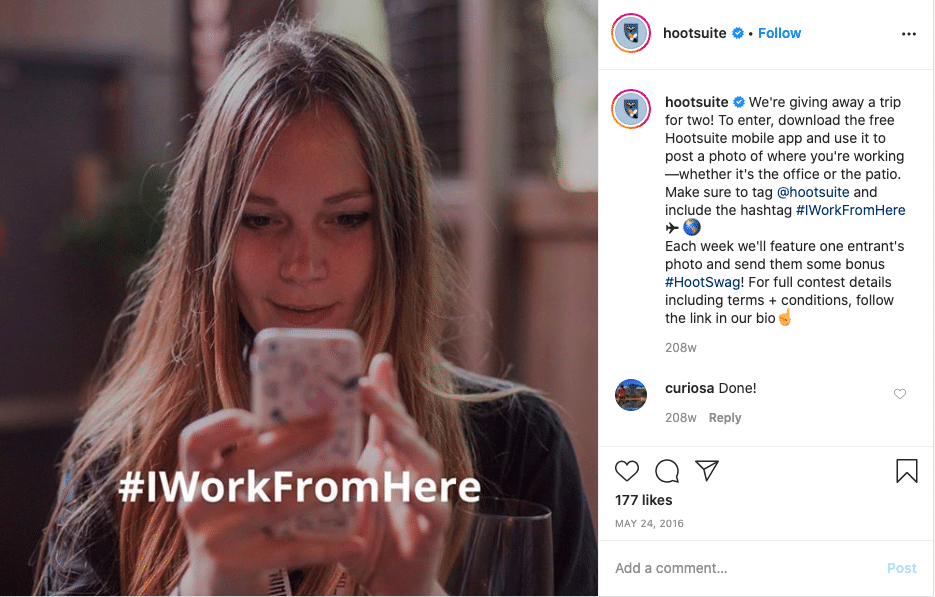
Chris Cox, Facebook's Chief Product Office, had mentioned last year about Facebook stories surpassing social new feeds. And boy, he was right. A recent report from 99firms reveals that all Facebook-owned platforms with 'stories' format have more than half a billion active users per day.
About 15-25% of users on Instagram are likely to 'swipe up' on a link in branded stories. The same report also showed that 1/3rd of the most-views Instagram stories are from businesses.
Needless to say, leveraging the "stories" format to get the word out is like tapping into gold.
This format has amassed a huge fan-following due to its limited shelf life. Users know that stories will disappear in 24 hours, thus they plunge into offers or discounts or news feeds right away. Adding to this, users can also swipe up on their mobile phones, making it easier to close deals for businesses.
On the other hand, brands are creating sponsored stories to target an audience faster. It follows the same logic of Facebook lead ads where you can set your ideal target audience.
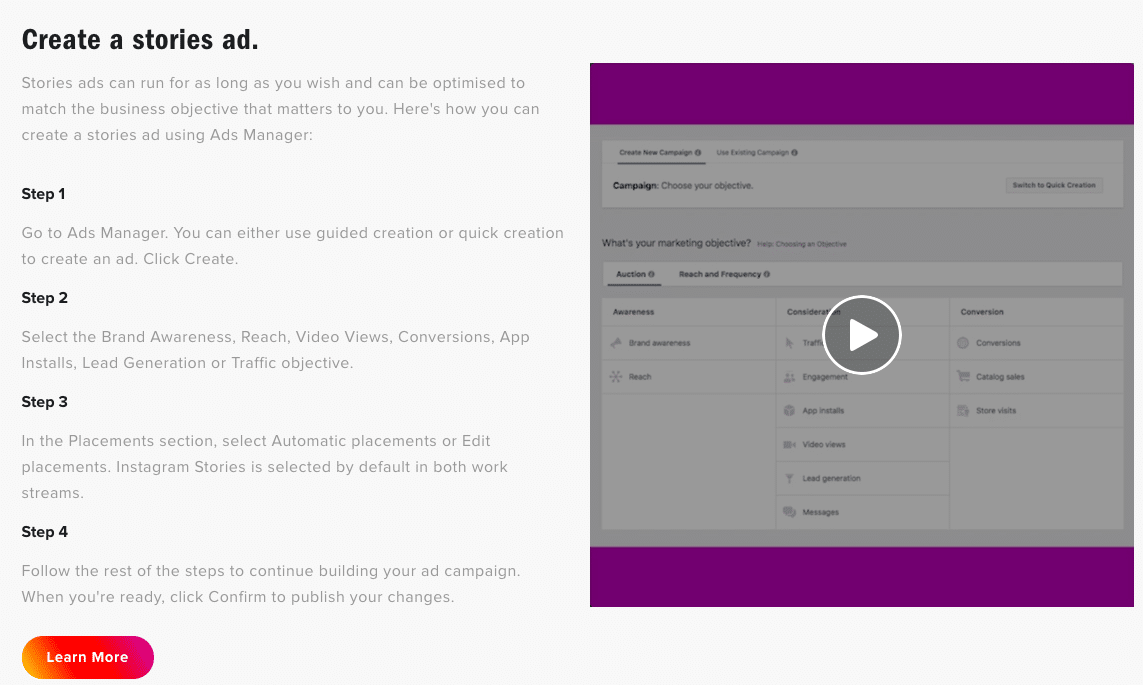
For instance, check Amazon Web Service announcing its online conference on Instagram Stories [Sponsored].
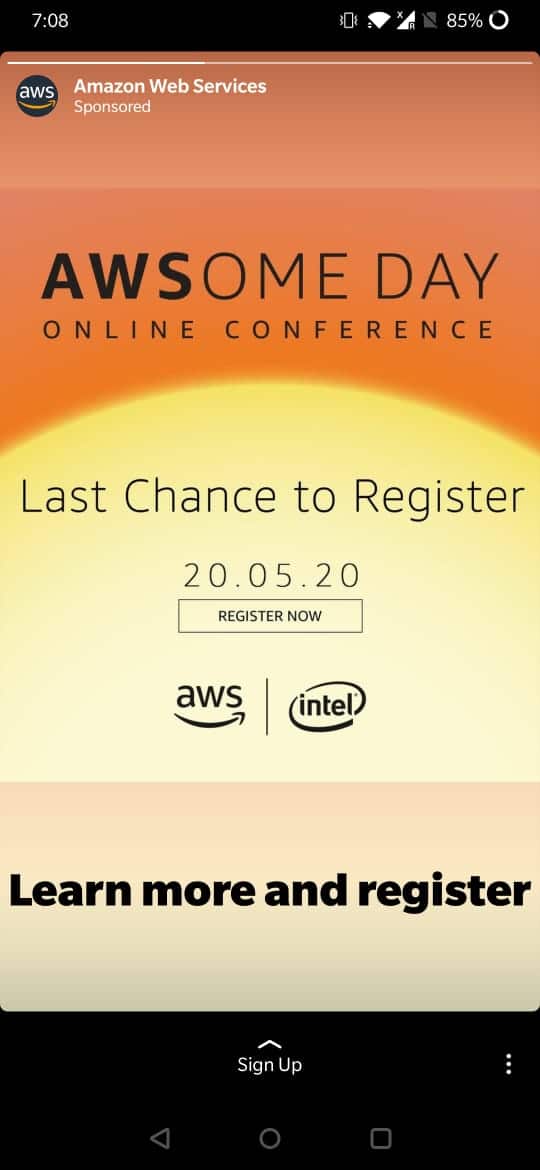
Disclaimer: SEO shouldn’t come in the way of your ‘quality-driven content’.
In a recent hangout session, John Mueller, the Senior Webmaster Trends Analyst at Google, cleared the misconceptions around SEO and outbound links. In the hangout, a publisher had asked about negative impacts of SEO in site's ranking, to which he replied:
There are sites that are targeted by black hat SEO. These sites have bad links pointed at them consistently, and they've also seen big drops.
When asked if he still believes the negative impact of SEO doesn't exist, he quickly added how it all is related to sites having bad links [which we all know exist]. He went on to point out how Google is not designed for bad SEO.
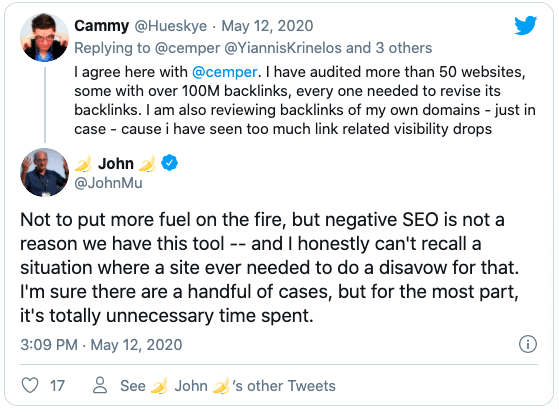
Mueller insisted everyone spend more time and energy in creating quality content rather than decoding Google's algorithms. He mentioned how relevancy attracts people, and if people are more focused on Google's algorithm, they are actually lagging behind.
Putting John Mueller's words into action, focus on your keyword research just to get your content in front of your organic searches. But double the effort on creating quality content against those keywords.
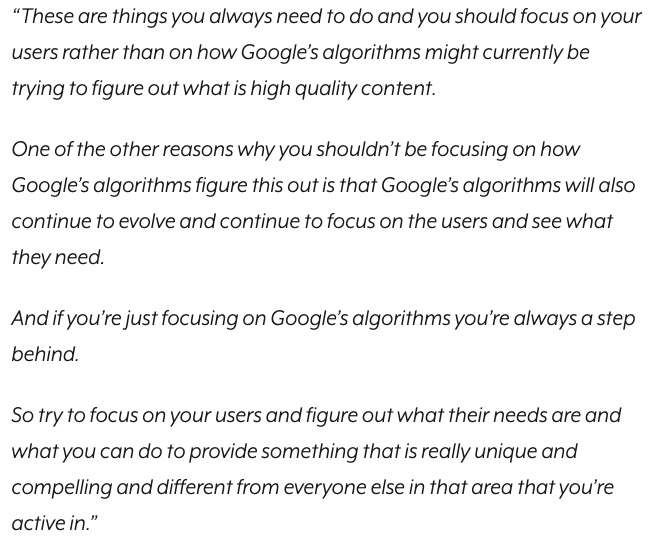
Source: SearchEngineJournal
You can use designated tools to do keyword research, like Moz's keyword searcher or BuzzSumo's keyword research tool.
Simultaneously, work on understanding the metrics of your content. Just like only keyword research cannot help, neither will only quality content serve the purpose. If you are not measuring how your contents are performing across different platforms, chances are you are not taking into account what might actually click with your target audience. Content metrics such as click-through rates, social impressions, subscriptions, etc. are crucial in analyzing if your quality content is driving enough results for your brand.
Only creating great content is not your end goal. You need to promote your content so that your audience knows that you've created an amazing piece.
Like Neil Patel says - "There is still marketing in content marketing", it is essential you spend considerable time in putting your content in the limelight.
You can do it through email marketing. Using emails for sending out relevant content assets, blog updates, and other content-driven announcements is a proven technique that experts practice. Take for instance this email from Larry Kim, founder of MobileMonkey -
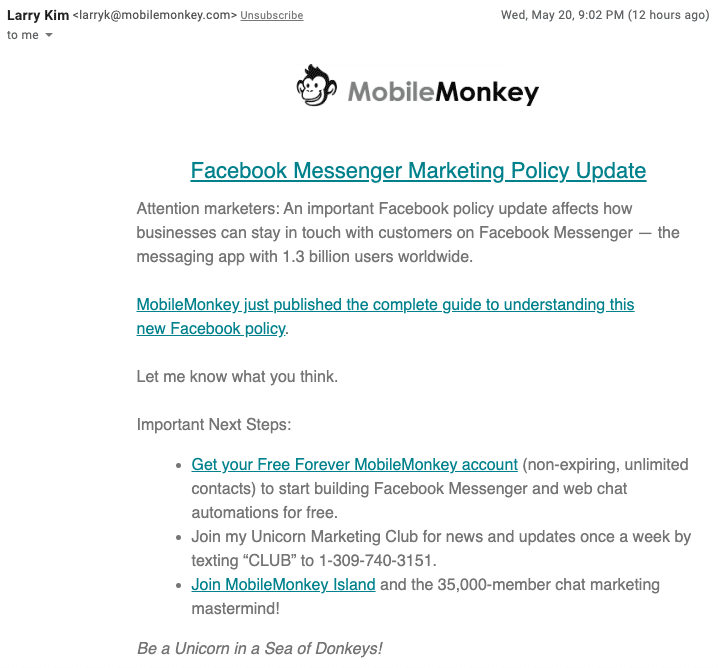
Facebook's policy change has recently come in, and a guide is exactly what we'd need to understand the policy changes and keep running a business smoothly. This email caters exactly to this need, promoting the downloadable guide to all email subscribers of MobileMonkey. Plus, the email looks neat.
Talking about Facebook, a vast majority of businesses run Facebook lead ads by boosting specific content materials. On Facebook, you can narrow down your audience, thus giving yourself enough leverage to garner higher social impressions and click-throughs.
Again, running an ad is not enough. You need to have the entire workflow set.
For instance, when I run a Facebook ad for a new article, I immediately connect my Google sheets to capture all lead details there. And to make sure my budget is utilized well to acquire more leads, I use interactive forms to make lead capturing relevant and smart.
Post this, Google sheet is connected to my CRM and marketing automation tool wherein leads are added based on action-based triggers. This whole workflow lets me capture leads, segment them based on their activities, and continue other follow-up marketing activities like emails or push campaigns smoothly.
Each brand has a different approach to doing content marketing. So, if you are trying to copy some other brand, don’t. It will not give you results. Your content marketing strategy heavily relies on three crucial factors:
Doing these three right can place your brand in the limelight forever. Make sure you create content that your users want and will love. This alone will do 70% of your work. Try implementing these 7 tips and let me know if they worked for you. Also, do let me know what else you’ve done to make your content marketing success.